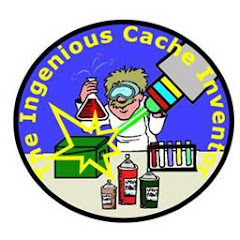 Lets face it, anybody can slap on the cover of a tupperware bowl or Lock'nLock box, hide it under some sticks and call it a cache. For many that is more than acceptable and gives the same reward of a smiley just like any other hide. But does it really give the same reward to the overall geocaching experience? I think not.
Lets face it, anybody can slap on the cover of a tupperware bowl or Lock'nLock box, hide it under some sticks and call it a cache. For many that is more than acceptable and gives the same reward of a smiley just like any other hide. But does it really give the same reward to the overall geocaching experience? I think not. - Is your cache area always the same color all year round? Are seasons a factor?
- Is there other objects nearby that may be of other colors your cache should include?
- What is the shade of color that will hide your cache best when people walk by?
 Lets go with some basic colors like green and brown for a moment. I have walked many wooded areas and depending on the terrain green can fluctuate from an almost neon (swampy areas), to a rich emerald mixed with all sorts of browns. In North Carolina we have a ton of pine trees and that means the floor is covered with dark brown pine needles and a lot less actual green. Now what? I highly suggest blending a series of colors to match the surroundings. The examples to the left show a series of ammo boxes with the initial spraying of a green background with brown overtones. I used a basic non-glossy Krylon spray paint to accomplish this. When properly dry another blending coat of green and brown softened the harsh lines.
Lets go with some basic colors like green and brown for a moment. I have walked many wooded areas and depending on the terrain green can fluctuate from an almost neon (swampy areas), to a rich emerald mixed with all sorts of browns. In North Carolina we have a ton of pine trees and that means the floor is covered with dark brown pine needles and a lot less actual green. Now what? I highly suggest blending a series of colors to match the surroundings. The examples to the left show a series of ammo boxes with the initial spraying of a green background with brown overtones. I used a basic non-glossy Krylon spray paint to accomplish this. When properly dry another blending coat of green and brown softened the harsh lines.
The same principle can work with urban caches. In those cases I have seen many more rust or brick colors mixed with shades of brown. You can also experiment with metallic colors such as silvers and greys. Urban caches tend to be much more of a challenge having to hide the caches much more frequently "in plain sight".
 What about textures? Oh there are some really cool textured paints out there. Want your Lock'nLock to look like part of a stone, no problem. How about a 35mm to match some rusty metal, can do. What about an ammo box to look like part of a brick wall? Check out the photo to to the left. This cache was extremely well done and overlooked for about an hour before I made the connection. It was positioned just right to look as if it was part of the wall. This is one of my absolute favorites.
What about textures? Oh there are some really cool textured paints out there. Want your Lock'nLock to look like part of a stone, no problem. How about a 35mm to match some rusty metal, can do. What about an ammo box to look like part of a brick wall? Check out the photo to to the left. This cache was extremely well done and overlooked for about an hour before I made the connection. It was positioned just right to look as if it was part of the wall. This is one of my absolute favorites.
So there you have it, would you like to find that plain 'ole clear white plastic or make something truly ingenious for your fellow cachers to find? Your choice but I would hazard to guess the resulting logs will be much more lengthier and more appreciative.
These of course are some very basic considerations for creative caches. You may have much more to add to this discussion. Please send your ideas and comments to mailto:cacheinventor@gmail.com.





1 comment:
Surface prep is the most important aspect of painting anything--SmoothPlastic should be roughed up with sandpaper to prevent the paint from peeling--and there are special spray paints designed for use on flexible plastics to retard peeling due to flexing...
Post a Comment